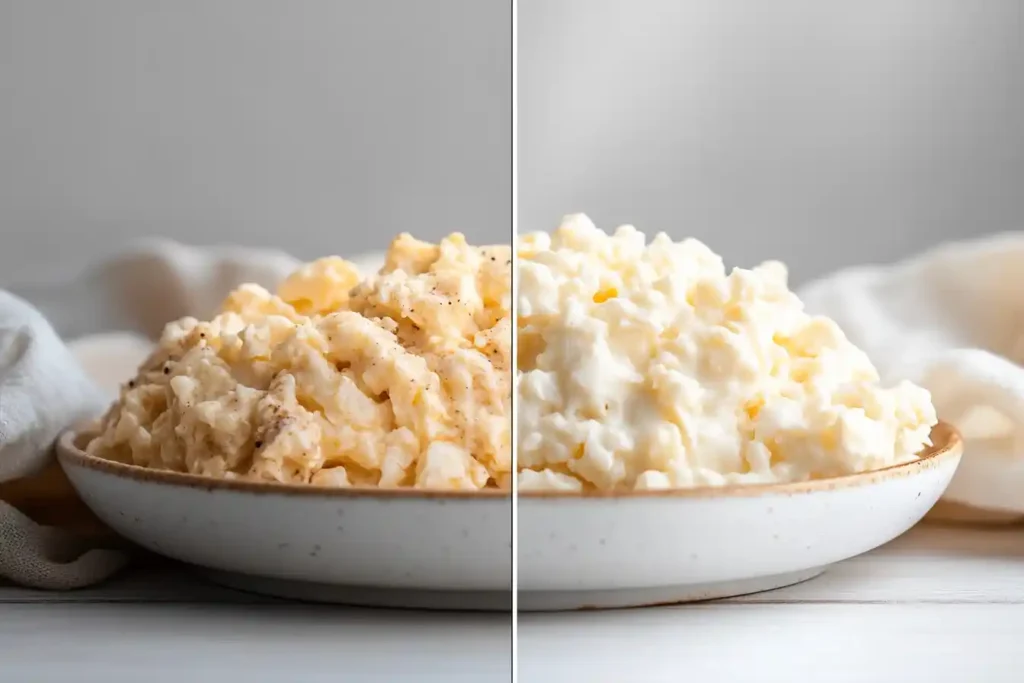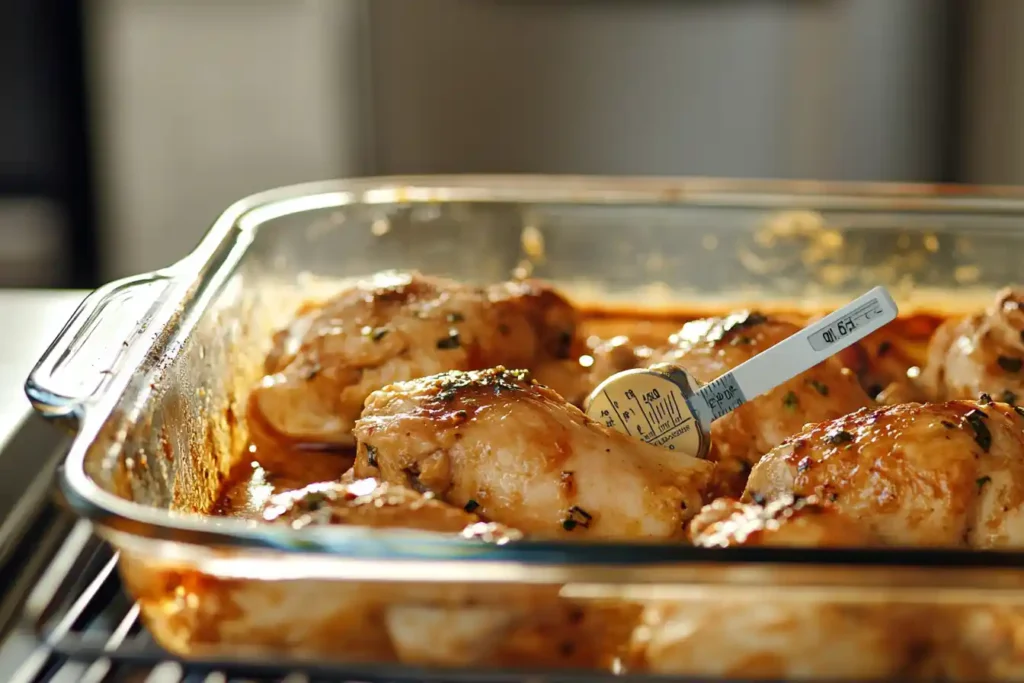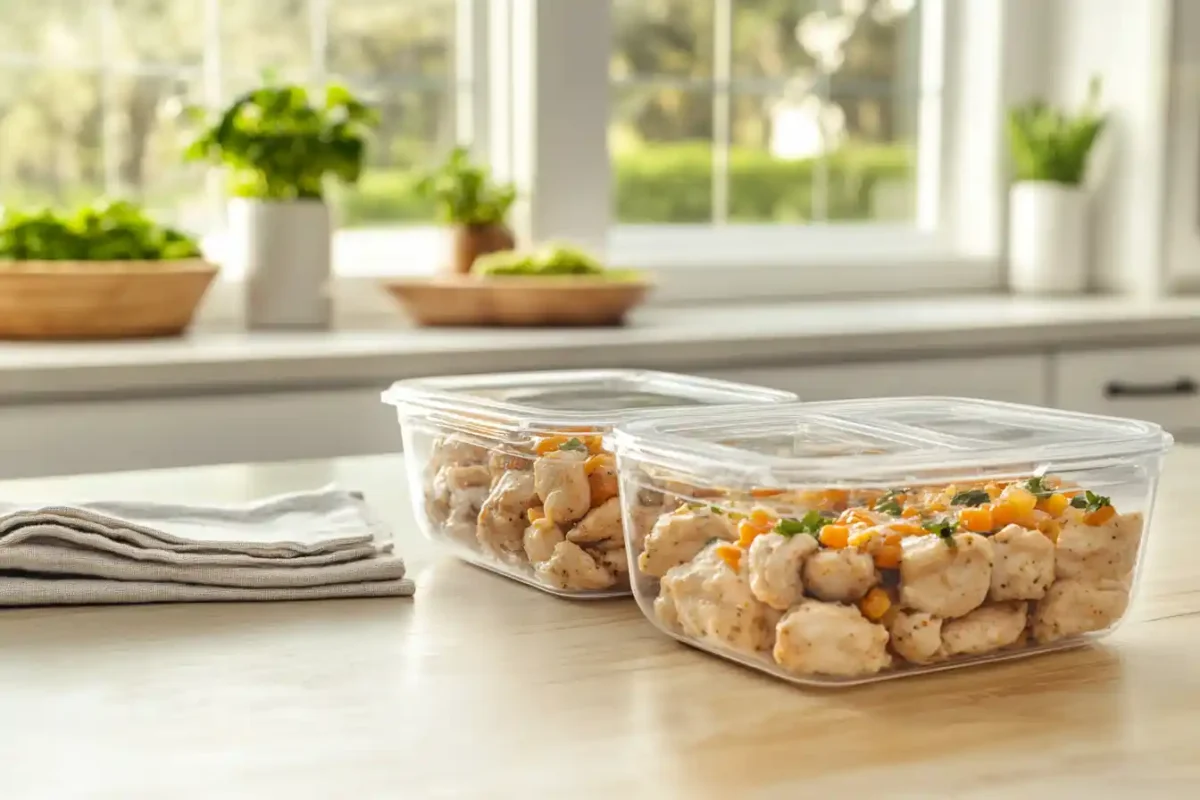Understanding the Shelf Life of Chicken and Dressing
Importance of Food Safety
Food safety isn’t just a buzzword; it’s a cornerstone of healthy living. Leftovers, especially ones with perishable ingredients like chicken and dressing, can quickly become breeding grounds for harmful bacteria. These microorganisms thrive in improperly stored food, leading to spoilage and even serious health issues such as foodborne illnesses.
When handling cooked dishes, it’s essential to follow food safety guidelines to the letter. Doing so can save you time, money, and, most importantly, your health. According to the USDA’s recommendations for leftovers, proper storage is critical for maintaining freshness and preventing contamination.
Risks of Consuming Spoiled Food
Let’s face it, spoiled food is not just unpleasant; it’s downright dangerous. Eating food that has passed its prime may expose you to pathogens like Salmonella, E. coli, and Listeria. These bacteria aren’t visible to the naked eye, which makes knowing the right storage practices even more critical.
For instance, cooked chicken that’s been left out for more than two hours falls into what’s called the “danger zone” (40°F–140°F), where bacteria multiply rapidly. Similarly, dressing, which often contains eggs, bread, and broth, can spoil just as quickly if mishandled.
Shelf Life of Cooked Chicken
How Long Does Cooked Chicken Last in the Refrigerator?
Cooked chicken stays fresh in the refrigerator for three to four days if properly stored. Beyond this, bacterial growth increases, risking foodborne illness. Refrigeration slows bacteria but doesn’t stop it entirely, so Tracking storage time is vital for maintaining freshness, as seen in diced chicken recipes.
USDA Guidelines on Cooked Chicken Storage
The USDA advises refrigerating cooked chicken within two hours of cooking, or one hour if it’s hotter than 90°F. Store it in an airtight container at 40°F or lower, preferably on the middle shelf where temperatures are more stable. Ensure the chicken cools to room temperature first, but avoid leaving it out too long.
Factors Affecting Shelf Life
Shelf life depends on how the chicken was cooked, with thoroughly cooked poultry being safer. Airtight containers or vacuum-sealed bags help preserve freshness, while marinades can also influence longevity—acidic ones may extend shelf life, while creamy sauces might shorten it.
Signs of Spoiled Cooked Chicken
Spoiled chicken shows discoloration (grayish or greenish), mold, or a slimy texture. A sour or ammonia-like smell is another red flag. Fresh chicken should be firm and moist—if it’s sticky, slimy, or smells off, it’s time to toss it. Trust your senses and prioritize safety!
Shelf Life of Dressing
Understanding Dressing and Its Ingredients
Dressing, a holiday favorite, can spoil quickly due to its mix of perishable ingredients. Bread, broth, eggs, dairy, and proteins like sausage or chicken make it susceptible to bacteria. Bread-based dressings are less perishable but become riskier when mixed with moisture-rich components, as detailed in this chicken and dressing recipe.
How Long Does Dressing Last in the Refrigerator?
Nutritional Comparison of Chicken and Dressing (per 100g)
| Nutrient | Chicken (100g) | Dressing (100g) |
|---|---|---|
| Calories | 165 kcal | 200 kcal |
| Protein | 31 g | 6 g |
| Fat | 3.6 g | 10 g |
| Carbohydrates | 0 g | 28 g |
| Fiber | 0 g | 2 g |
| Sodium | 74 mg | 500 mg |
Dressing typically lasts three to four days in the refrigerator when stored in airtight containers. The USDA advises removing stuffing from poultry within two hours of cooking to cool it faster and prevent bacterial growth. Shallow containers and a fridge temperature below 40°F are key to preserving freshness.
Identifying Spoiled Dressing

Spoiled dressing shows mold, discoloration, or a sticky film and emits a sour or rancid odor. Fresh dressing is fluffy and moist, but spoiled dressing may become mushy, slimy, or overly dry. If you notice these signs, discard it to avoid health risks. When in doubt, throw it out!
Proper Storage Techniques
Best Practices for Storing Cooked Chicken
Properly storing cooked chicken is essential to ensure it stays safe and tasty. By following a few simple guidelines, you can extend its shelf life while maintaining its quality. Let’s dive into the best practices that make all the difference.
Appropriate Containers and Temperature
The container you choose plays a huge role in keeping cooked chicken fresh. Airtight containers or resealable plastic bags are your best bet, as they prevent air exposure that can lead to spoilage. Glass containers with secure lids are also excellent because they don’t absorb odors and are easy to clean.
Equally important is temperature. Cooked chicken should always be stored in a refrigerator set to 40°F or below. Keeping food consistently cool prevents bacterial growth, which thrives in warmer temperatures. Avoid using the refrigerator door for storage since it experiences frequent temperature fluctuations.
Timing for Refrigeration
Timing is everything when it comes to leftovers. Cooked chicken should be refrigerated within two hours of cooking—or within one hour if the ambient temperature is 90°F or above. The longer food sits out at room temperature, the more it enters the “danger zone,” where bacteria multiply rapidly.
To cool cooked chicken quickly, portion it into smaller pieces or spread it out on a plate before refrigerating. This allows the heat to dissipate faster and minimizes the risk of spoilage. Remember, the sooner you refrigerate, the safer your leftovers will be.
Best Practices for Storing Dressing
Storing dressing correctly ensures its flavors remain intact and reduces the risk of spoilage. From cooling to packaging, each step matters for optimal freshness and safety.
Cooling and Packaging Methods
Dressing should be cooled thoroughly before storage. Placing warm dressing directly into the refrigerator can raise the internal temperature, affecting nearby foods and slowing the cooling process. To speed things up, divide the dressing into smaller portions and spread it out on shallow trays for rapid cooling.
When it comes to packaging, use airtight containers or heavy-duty freezer bags. These prevent exposure to air and moisture, which can degrade the dressing’s texture and flavor. If freezing, label the containers with the date to keep track of freshness.
Avoiding Cross-Contamination
Cross-contamination is a major concern when storing dressing. Keep it away from raw or uncooked foods, as this can introduce harmful bacteria. Using separate containers for different leftovers minimizes the risk of contamination.
Additionally, avoid placing dressing in containers that previously held raw ingredients without proper cleaning. Ensure all utensils, hands, and surfaces are sanitized before handling the dressing. With these precautions, you can enjoy safe and delicious leftovers every time.
Reheating Guidelines
Safe Reheating of Cooked Chicken
Reheating cooked chicken properly ensures both safety and taste. To avoid foodborne illnesses and maintain quality, follow these guidelines for reheating while preserving the chicken’s flavor and texture.

Recommended Internal Temperatures
When reheating chicken, the USDA recommends that it reach an internal temperature of 165°F to kill any harmful bacteria. Using a food thermometer ensures safety, an essential step highlighted in this cream of turkey soup recipe.
Always check the temperature at the thickest part of the chicken, as this area takes the longest to heat. Avoid assuming the outer layers are a sufficient indicator of overall temperature—this mistake can lead to uneven heating and unsafe consumption. Whether using an oven, stove, or microwave, this temperature rule is non-negotiable for safety.
Methods to Retain Moisture and Flavor
Reheated chicken can sometimes turn dry and rubbery, but you can easily prevent this with a few tips. When using the oven, cover the chicken with foil to lock in moisture, or add a splash of chicken broth or water to the pan.
For stovetop reheating, consider using a covered skillet over low heat to gently warm the chicken. If reheating in the microwave, place a damp paper towel over the chicken to trap steam, keeping it tender. These methods ensure your cooked chicken tastes as good as it did when fresh.
Safe Reheating of Dressing
Reheating dressing requires a balance of safety and taste. Proper reheating not only prevents spoilage but also revives the flavors and textures that make it so delightful.
Ensuring Even Heating
One of the most common reheating mistakes is uneven heating, which can leave parts of the dressing cold and others overcooked. To ensure even heating, spread the dressing evenly in a baking dish or on a microwave-safe plate. Break up large chunks, as compact dressing takes longer to heat through and may not reach safe temperatures.
Stirring dressing halfway through the reheating process—whether in the oven or microwave—can help distribute heat more uniformly, reducing the risk of hot spots or cold centers.
Oven and Microwave Instructions
The oven is ideal for reheating dressing, as it helps restore its texture without drying it out. Preheat the oven to 350°F, place the dressing in an oven-safe dish, and cover it with foil to retain moisture. Heat for 20-30 minutes, depending on the portion size, checking the internal temperature to ensure it reaches 165°F.
For a quicker option, use the microwave. Transfer the dressing to a microwave-safe container, cover it with a microwave-safe lid or wrap, and heat in 1-minute intervals. Stir between each interval to promote even warming, and always confirm the internal temperature before serving. With these tips, your dressing will taste just as fresh as when it was first prepared!
Freezing Chicken and Dressing
Guidelines for Freezing Cooked Chicken
Freezing cooked chicken is an excellent way to extend its shelf life while maintaining its quality. Proper preparation and storage techniques ensure that your chicken stays flavorful and safe for future meals.
Preparation Steps Before Freezing
Before freezing cooked chicken, allow it to cool completely to prevent ice crystals from forming, which can damage its texture. Once cooled, portion the chicken into meal-sized servings to make defrosting more convenient later.
Wrap the chicken tightly in plastic wrap or aluminum foil, then place it in an airtight container or a heavy-duty freezer bag. Be sure to remove as much air as possible to prevent freezer burn, which can degrade the taste and texture. Label the container with the freezing date to keep track of its freshness.
Shelf Life in the Freezer
When properly stored, cooked chicken can remain safe to eat for up to three to four months in the freezer. However, its quality is best during the first one to two months. After that, the chicken may develop slight changes in texture or flavor, although it’s still safe to consume if kept at 0°F or lower.
To maximize its longevity, ensure the freezer maintains a consistent temperature. Avoid repeated thawing and refreezing, as this can lead to bacterial growth and reduce the chicken’s overall quality.
Guidelines for Freezing Dressing
Freezing dressing is a convenient way to enjoy your favorite dish well beyond its typical refrigerator shelf life. While freezing can alter its texture slightly, proper techniques can minimize these changes and preserve its flavor.
Impact on Texture and Flavor
The ingredients in dressing, such as bread, broth, and eggs, can react differently to freezing. Bread-based dressings may become slightly soggy or crumbly after thawing, while dairy-heavy or egg-rich dressings might experience some separation.
To mitigate these effects, consider undercooking the dressing slightly before freezing. This way, the reheating process can finish cooking it without over-drying. Adding a bit of extra broth or butter during reheating can also help restore its moisture and texture.
Thawing and Reheating Frozen Dressing
For best results, thaw frozen dressing overnight in the refrigerator. This method ensures it defrosts evenly and reduces the risk of bacterial growth. If you’re short on time, you can use a microwave on the defrost setting, but avoid leaving the dressing at room temperature for extended periods.
Once thawed, reheat the dressing in a preheated oven at 350°F, covered with foil to retain moisture. Heat until the internal temperature reaches 165°F, stirring occasionally to ensure even warming. With these careful steps, your frozen dressing can taste just as flavorful and satisfying as the day it was made.
Frequently Asked Questions on Chicken and Dressing Storage and Safety
Leftovers should be refrigerated within two hours of cooking to avoid falling into the “danger zone” (40°F–140°F), where bacteria multiply rapidly. If the room temperature is particularly warm, such as during summer or in a hot kitchen, refrigerate the food within one hour. Prompt refrigeration is critical to preserving the quality and safety of your chicken and dressing. Always use shallow containers to cool the food faster, as this prevents bacterial growth during the initial cooling phase.
No, leaving cooked chicken or dressing out overnight is unsafe. After two hours at room temperature (or one hour in temperatures over 90°F), harmful bacteria like Salmonella or Clostridium perfringens can grow to dangerous levels. Eating food left out this long increases the risk of foodborne illness, even if it appears or smells fine. If you forgot to refrigerate leftovers within the recommended time, it’s best to discard them to avoid potential health risks.
While it’s safe to reheat chicken and dressing more than once, it’s not ideal. Each reheating process exposes the food to temperature changes, which can increase bacterial growth and reduce quality. If you plan to eat the leftovers in smaller portions over time, divide them into individual servings before refrigerating. This way, you only reheat what you need, minimizing potential food safety issues while maintaining better flavor and texture.
nal temperature of 165°F to maintain safety and flavor. With the right techniques, egg-based dressings can freeze well and taste just as delicious when reheated.
Conclusion on Chicken and Dressing Storage and Safety
Ensuring the safe consumption of chicken and dressing involves understanding their shelf life, proper storage, and reheating methods. From the refrigerator to the freezer, following food safety guidelines protects you from harmful bacteria while preserving the delicious flavors of your favorite dishes.
Remember to refrigerate leftovers within two hours, use airtight containers, and keep temperatures consistent to maintain freshness. Pay attention to signs of spoilage—when in doubt, throw it out. Additionally, reheating with care ensures that your leftovers remain safe and enjoyable.
By incorporating these practices into your routine, you can confidently enjoy chicken and dressing without compromising safety or taste. Taking these small steps ensures not only delicious meals but also peace of mind for you and your loved ones!

